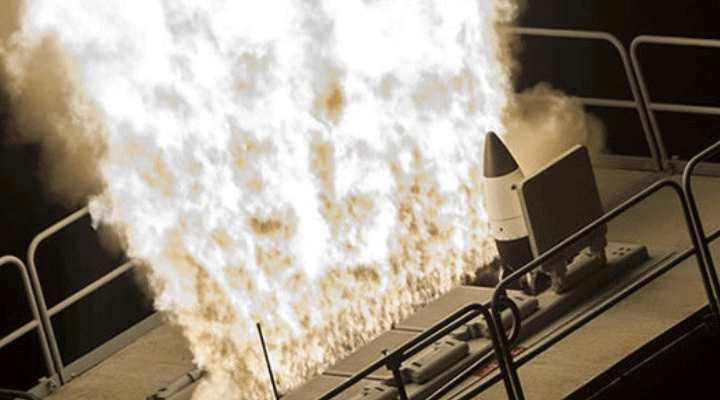On Monday, we discussed the House leadership’s decision to combine Senate language on Russia and Iran sanctions with its own sanctions bill targeting North Korea. They passed that combined bill on Tuesday. While health care is getting the most attention this morning, the Senate followed suit yesterday. The bill now heads to President Trump, who must either support a bill that imposes economic sanctions on the three countries which he would be unable to undo without Congressional review, or be seen as aiding the Putin regime in Moscow.
The latest wrinkle, though, isn’t on the Russian front, it’s in Iran. While the administration recently certified to Congress that Iran is still complying with the deal to prevent its development of nuclear weapons, it is making progress on other technologies that could someday be used to deliver a nuclear warhead anywhere in the world.
On Wednesday, the Iranian government announced it had launched a missile capable of placing a satellite into orbit. The Iranians claim the Simorgh missile – Farsi for Phoenix – can carry a 550-pound satellite into a 315-mile-high “low-earth orbit,” although they did not specify if they launched such a satellite on this particular rocket. The program has previously placed satellites, and on one occasion a monkey, into orbit.
IF IT CAN GET INTO ORBIT, IT CAN HIT JUST ABOUT ANYWHERE
If you’re concerned about Iran’s ability to strike Israel (which it has at various times threatened to “wipe off the map”) or the United States, then this launch should be troubling news. The State Department asserted the launch violates 2015’s United Nations Security Council Resolution 2231, which prohibits Iran from developing an ICMB capable of delivering a nuclear warhead, but according to other reports, does not specifically prohibit testing it. (I will have to rely on the interpretation of others; if you thought legislative language was dense, try to read a UN resolution).
The problem is, it’s difficult to say when an orbital rocket stops and an ICBM begins.
The National Air and Space Intelligence Center, run by the U.S. Air Force at Wright-Patterson Air Force Base in Ohio, recently released its 2017 “Ballistic and Cruise Missile Threat” assessment. The report states that although the Simorgh is not an ICBM, the program “could shorten a pathway to an ICBM because space launch vehicles (SLV) use inherently similar technologies.”
Furthermore, such missiles need not be nuclear-armed to be a serious threat. The NASIC report also notes that “numerous types of ballistic and cruise missiles have achieved dramatic improvements in accuracy that allow them to be used effectively with conventional warheads.”
Granted, the current payload capacity of the Smirogh missile would only allow it to carry a conventional warhead equivalent to the U.S. Mark 82 bomb, the smallest of the warheads used for the JDAM family of precision-guided bombs. The Mk-82 has a lethal blast area of roughly 80 meters by 30 meters. So it would be a fairly wasteful use of resources to put a warhead that could only destroy a building the size of a football field on a quasi-ICBM, but no one has ever accused the Iranian regime of acting rationally, either.
Despite sanctions, both Iran and North Korea continue to make great strides in their missile programs. While the launch vehicle is only one component of a nuclear capability, it is the component that allows a nuclear-armed power to deliver that weapon over long distances.
It’s not a capability the United States wants a state sponsor of terrorism like Iran to possess, and all the more reason to continue fielding countermeasures like the THAAD.




